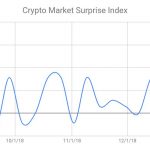
This article was originally posted on PERC360.
I had to break up this Q&A into two part because there was no way to fit it all within the 360-word article cap on PERC360. So without further ado, I present my exclusive interview with the Chief Technology Officer of SetOcean, Oscar Lafarga.
Alan Percal: Could you give the PERC360 audience a brief background of yourself?
Oscar Lafarga: I’m the CTO of SetOcean, a technology company based in Ft. Lauderdale, Florida, and we focus on consulting on software engineering, cryptocurrency, and app security. A lot of what I do involves system architecture so I tend to think about blockchain and forking from the perspective of network security and vulnerability analysis.
Alan Percal: Could you give me some insight into why Bitcoin is forking again and what that means?
Oscar Lafarga: Well, there are a lot of politics involved in the Bitcoin community. Essentially, Bitcoin is software, and anyone who runs it is part of the network. Anyone who doesn’t like the current software can make their own altcoin version and “fork” from the network. Obviously keeping the Bitcoin name would help drive the price, so that’s been done before (see Bitcoin Cash fork, August 2017). Post fork, whichever coin ends up having the economic majority of miners contributing hash power is the “real Bitcoin”. So, for example, the Bitcoin Cash fork currently has about ~20-25% of the hash rate of Bitcoin. So they’re basically competing in a free market, which is great right? The problem is that every time the currency forks, it somewhat compromises Bitcoin’s preprogrammed limited supply (21 million). So when 16 million Bitcoin Cash coins were released into the market you’d expect a chunk of Bitcoin’s value to go with it.
To sum up my answer here, Bitcoin forks when those that disagree with the core developers want to take Bitcoin down a different path. Whether this is driven by profit, ideology, or straight up greed is always difficult to determine.
——————————————————————————————————
This concludes part 1 of my Q&A with Oscar. To read part 2, click here.
If you’re interested in reading more from the folks at SetOcean you can check out their Medium.









